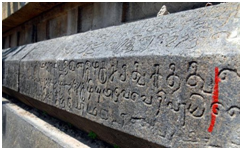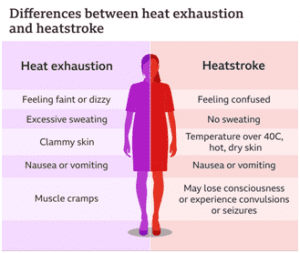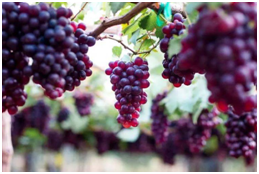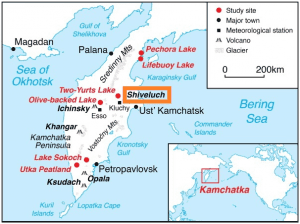HISTORY AND HERITAGE
1. UTTARAMERUR INSCRIPTION
TAGS: GS-I- HISTORY AND HERITAGE- PRELIMS
THE CONTEXT:Prime Minister recently referred to the Uttaramerur inscription in Kanchipuram, Tamil Nadu, while discussing India’s democratic history.
THE EXPLANATION:
Where is Uttaramerur?
- Uttaramerur lies in present-day Kanchipuram district, approximately 90 km southeast of Chennai. Today, it is a small town and had a population of roughly 25,000 in the census of 2011. It is known for its historic temples built during Pallava and Chola rule.
- The famous inscription from Parantaka I’s reign is found on the walls of the Vaikunda Perumal Temple.
What does the inscription say?
- The inscription gives details of the functioning of the local sabha, i.e. the village assembly. A sabha was an assembly exclusively of brahmans and had specialised committees tasked with different things.
- The Uttaramerur inscription details how members were selected, the required qualifications, their roles and responsibilities, and even the circumstances in which they could be removed.
- Qualification of the representative: To become a representative of the Gram Sabha, the age of a person should be 35 to 70 years. He must have a certain amount of land. To become a representative it was necessary to have knowledge of Vedas. Anyone could get exemption on the ownership of land, but for that he should have knowledge of one Veda and four commentaries. To become a representative, a person should also be proficient in business.
- Rules of disqualification of the representatives: The inscriptions has also been told about the rules of disqualification of the representatives. Those who have committed five great sins cannot become a representative. Four of these were murder of Papa Brahmin, drinking alcohol, theft and adultery. The one who wanted to become a member should not be of criminal nature himself.
HEALTH ISSUES
2. HEATSTROKE
TAGS: GS-II-HEALTH ISSUES- PRELIMS
THE CONTEXT:Recently, 11 persons reportedly died of heat stroke while attending the Maharashtra Bhushan Award ceremony at Kharghar in Navi Mumbai.
THE EXPLANATION:
What is heatstroke?
- Heatstroke is a life-threatening condition that causes your body to overheat. It’s defined as a body temperature above 104 degrees Fahrenheit (40 degrees Celsius). Heatstroke, also called sunstroke, is the most severe form of hyperthermia, or heat-related illness. Heatstroke can lead to brain damage, organ failure or death.
Types of heatstroke:
There are two types of heatstroke:
- Exertional heatstroke: This form of heatstroke is usually the result of physical overexertion in hot, humid conditions. It can develop in a few hours.
- Non-exertional heatstroke: Also called classic heatstroke, this type can occur due to age or underlying health conditions. It tends to develop over several days.

Symptoms of heatstroke
- Anhidrosis (dry skin that doesn’t sweat, which is more common in non-exertional heatstroke).
- Ataxia (problems with movement and coordination).
- Balance problems.
- Delirium (confusion or disorientation).
- Excessive sweating that continues after you’ve stopped exercising (more common in exertional heatstroke).
- Hot, flushed skin or very pale skin.
- Low or high blood pressure.
SOCIAL ISSUES
3. SAME-SEX MARRIAGE’S LEGAL RECOGNITION IN INDIA
TAGS: GS-II- SOCIAL ISSUES
THE CONTEXT:Recently, the Supreme Court has set up a five-judge Constitution bench to hear the batch of petitions seeking legal recognition of same-sex marriages in India.
THE EXPLANATION:
Background:
- The Court has been hearing multiple petitioners’ requests for legal recognition of same-sex marriages under a special law. Initially, it took up the case of two partners who said the non-recognition of same-sex marriage amounted to discrimination that strikes at the root of “dignity and self-fulfilment” of LGBTQIA+ couples.
- The petitioners cited the Special Marriage Act, 1954, which provides a civil marriage for couples who cannot marry under their personal law, and appealed to the Court to extend the right to the LGBTQIA+ community, by making the “marriage between any two persons” gender neutral.
Why does the community want this right?
- Even if LGBTQIA+ couples may live together, legally, they are on a slippery slope. They do not enjoy the rights married couples do.
- For example, LGBTQIA+ couples cannot adopt children or have a child by surrogacy; they do not have automatic rights to inheritance, maintenance and tax benefits; after a partner passes away, they cannot avail of benefits like pension or compensation.
- Most of all, since marriage is a social institution, “that is created by and highly regulated by law,” without this social sanction, same-sex couples struggle to make a life together.
Which way are the Courts leaning?
- The Courts, leaning on Article 21 that guarantees the right to life and liberty, have time and again ruled in favour of inter-faith and inter-caste marriages, directing the police and other rights organisations to give them protection when they were threatened by parents or society, pointing out that “all adults have the right to marry a person of their choice.” In Navtej Singh Johar (2018), when homosexuality was decriminalised.
- “Members of the LGBT[QIA+] community are entitled to the benefit of an equal citizenship, without discrimination, and to the equal protection of law”.
- “The choice of whom to partner, the ability to find fulfilment in sexual intimacies and the right not to be subjected to discriminatory behaviour are intrinsic to the constitutional protection of sexual orientation.
PRELIMS PERSPECTIVE
4. TAMIL NADU’S CUMBUM GRAPES GET GEOGRAPHICAL INDICATION TAG
TAGS: PRELIMS PERSPECTIVE
THE CONTEXT: The Cumbum grapes also known as Paneer Thratchai, recently earned the Geographical Indication tag or GI tag.
THE EXPLANATION:
What is unique about these grapes?
- The Cumbum valley located at the Western Ghats in Tamil Nadu is known as the ‘Grapes city of South India’ and cultivates the Paneer Thratchai. This variety which is also known as Muscat Hamburg constitutes almost 85% of the grape-growing areas in Tamil Nadu.
- Theni district is one of the highest grapes producing areas of Paneer Thratchai. However, the ‘Panneer’ variety is chiefly associated with Cumbum Valley, where the cultivation area covers around 2,000 acres at 10 villages.
- The agro climate and the soil condition of the Cumbum region is very conducive for the cultivation of the Muscat variety. This variety is popular for its quick growth and early maturity. This ensures that the crop is available in the market almost throughout the year.
- The rich soil and water of the land are said to enhance the flavour of the natural fruit. The grape bunches are medium to large in size and compact in nature. The grapes grown are suitable for making wine, spirit, jams, canned grape juice and raisins.
- The Panneer grapes were first introduced in Tamil Nadu by a French priest in 1832. These grapes are rich in vitamins, tartaric acid and antioxidants and reduces the risk of some chronic diseases. They are also known for a superior taste apart from the purplish-brown colour.
Connect the dots:
- What is GI tag?
PLACES IN NEWS
5. SHIVELUCH VOLCANO
TAGS: PRELIMS-PLACES IN NEWS
THE CONTEXT: One of the Russia’s most active volcano recently erupted on the far eastern Kamchatka peninsula region spewing ash up to 20 kilometres above sea level, according to the Russia Academy of Sciences (RAS) Geophysical Survey.
About Kamchatka Peninsula:
- The Kamchatka Peninsula of Russia is a 1,250 km long peninsula on the far eastern edge of Siberia. It sits at the junction of a triple plate collision between the North American, the Pacific and the Eurasian Plates. It occupies something called the Okhotsk Block which is being shoved into the Eurasian Plate and borders on the Bering Block which defines the area north of the Aleutian chain of volcanic islands.
- It is one of the most concentrated areas of geothermal activity in the world, with 160 volcanoes in the region, 29 of which are believed to be currently active.
- Also, it is a part of the vast belt of Earth known as the “Ring of Fire” which circles the Pacific Ocean and is prone to eruptions and frequent earthquakes.
Shiveluch Volcano:
- Shiveluch is one of the largest and most active volcanoes in Kamchatka, having erupted at least 60 times in the past 10,000 years.
- It has two main parts: Old Shiveluch, which tops 3,283 metres (10,771 ft), and Young Shiveluch – a smaller, 2,800-metre peak protruding from its side.
- Young Shiveluch lies within an ancient caldera – a large crater-like basin that likely formed when the older part underwent a catastrophic eruption at least 10,000 years ago.
- It is this part that has become extremely active; the lava dome continues to grow and that stronger “fumarole activity” has been observed.


